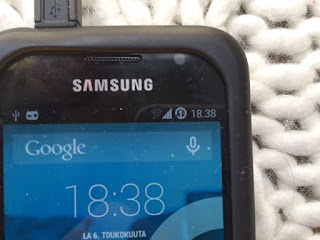After wiping out the proprietary world I decided to give Linux - and especially Raspbian - a go on EeePC 1000H. Raspbian is based on Debian Linux and is known as the OS of the Raspberry Pi. Did you know Raspbian also runs on x86, not only on ARM? The ISO can be downloaded here:
- Direct link: http://downloads.raspberrypi.org/rpd_x86/images/rpd_x86-2017-06-23/2017-06-22-rpd-x86-jessie.iso
- Torrent: http://downloads.raspberrypi.org/rpd_x86/images/rpd_x86-2017-06-23/2017-06-22-rpd-x86-jessie.iso.torrent
The ISO can be written on a USB stick many ways. If you are already using Linux then try this: sudo dd if=rpd_x86-2017-06-23/2017-06-22-rpd-x86-jessie.iso of=/dev/sdb. You'd better make sure nothing is overwritten! Use Esc to choose USB stick when booting EeePC 1000H. After that, off you go and install Raspbian. Business as usual.
After the setup had finished wifi didn't work. The light was on but EeePC 1000H and Raspbian couldn't find any wifi hotspots. Now what? Ok, after some tweaking I realized there was no driver for the wifi circuit. Off I went and found a suitable solution here: https://wiki.debian.org/DebianEeePC/HowTo/Wifi. First I wired EeePC 1000H and then opened the terminal window and typed in: sudo apt update. After that: sudo apt install firmware-ralink. That did the trick! After reboot EeePC 1000H and Raspbian found my wifi network!
And that's it! My EeePC 1000H is running the best software there is - Raspbian!
EeePC 1000H running Raspbian and Pixel Desktop
First I had to install HDD since there was not one inside



























